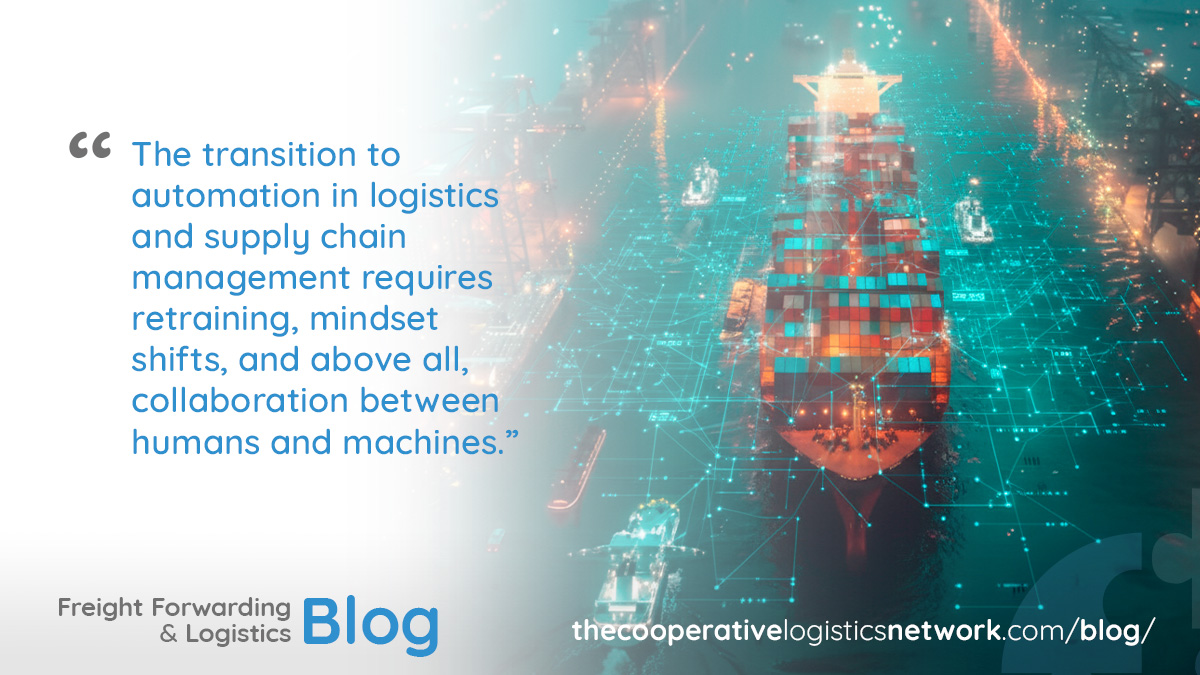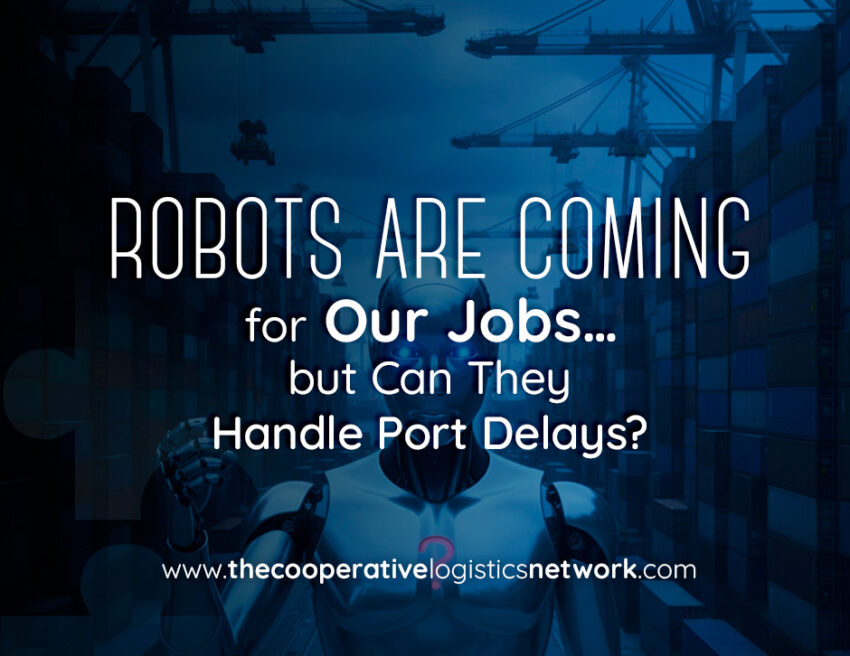AI in Logistics: How Automation Is Transforming Logistics Operations
Every time someone mentions AI in logistics, a few people secretly picture an army of tireless robots zipping across docks, perfectly stacking containers, and never needing a coffee break. It sounds great until you remember that ports still struggle to unload ships on time, and even the smartest machine can’t sweet-talk customs when a form goes missing. So yes, AI and automation are transforming logistics. But before we hand over the keys to the robots, it’s worth asking: can they really handle the chaos that makes logistics such a human-driven industry?

The Rise (and Reality) of Automation in Logistics
The buzz around automation in logistics is everywhere from self-driving trucks, to drones, smart warehouses, and ports run by algorithms. Big names like Rotterdam and Singapore are already leading the way with port automation and smart port technology, using sensors and data-driven systems to monitor every crane, container, and carrier movement in real time. Automated terminals can load and unload faster, cut idle time, and even reduce emissions. AI in logistics makes sense when you’re dealing with predictable patterns and large data sets. It can forecast congestion, optimize routes, and predict maintenance issues before they happen. But the sea isn’t always calm, and neither is the global supply chain. The reality is that logistics thrives on exceptions, and that’s where the human edge still shines.
How AI Is Solving Port Congestion (and Where It Still Trips Up)
To be fair, AI in freight forwarding and port management has already tackled some big challenges. By analyzing vessel schedules, cargo data, and weather forecasts, algorithms can predict where congestion might happen. Using real-time data analytics for port operations, they can suggest alternative berths, improve yard planning, and minimize truck waiting times. In theory, it’s beautiful. In practice, things still get messy. A sudden strike, a delayed vessel, or an unexpected customs hold can turn even the smartest AI system into a digital deer in headlights. Machines excel at pattern recognition but they struggle with chaos, improvisation, and negotiation.
Humans, on the other hand, handle chaos like a daily workout. So, while AI in logistics helps ports and freight forwarders see the big picture, it still relies on people to interpret, decide, and act when the system encounters something that doesn’t fit the model.
The Benefits of Port Automation for Freight Forwarders
Let’s not downplay the positives. The benefits of port automation for freight forwarders are very real. Automated ports mean faster vessel turnaround, fewer manual errors, better visibility, and lower operational costs in the long run. For freight forwarders, that translates into quicker shipments, happier clients, and fewer sleepless nights tracking containers. However, the cost of port automation technology is no small matter. Upgrading an entire port with cranes, sensors, and AI-powered systems costs billions, and that investment often passes down the chain in the form of higher handling fees. For smaller players, those costs can bite.
That’s why forwarders need both worlds: the efficiency of automation and the intuition of experienced partners who know when and how to intervene.
The Challenges of Implementing AI in Ports
Here’s where the shiny dream gets a bit cloudy. The challenges of implementing AI in ports go beyond technology. Data sharing between port authorities, carriers, customs, and forwarders remains patchy. Many older terminals still rely on legacy systems that don’t “talk” to newer platforms.
Then there’s the human factor. Workers fear job losses. Managers worry about data privacy. And decision-makers struggle to trust algorithms they don’t fully understand. The transition to automation in logistics and supply chain management requires retraining, mindset shifts, and above all, collaboration between humans and machines. Even if robots can stack containers in perfect order, they still can’t handle a client asking why their shipment of luxury handbags is stuck behind 200 tons of frozen fish.
AI vs Human Decision-Making in Logistics
Here’s the heart of the debate: AI vs human decision-making in logistics. Machines are unbeatable when it comes to speed and accuracy, but logistics isn’t just math; it’s relationships, judgment, and timing. An experienced freight forwarder can sense when a partner’s “no problem” really means “we’re in trouble.” AI can flag risks, but it can’t build trust. It can predict delays, but it can’t pick up the phone and negotiate a faster clearance. And that’s exactly why the human element in logistics is irreplaceable.
Why The Cooperative Logistics Network Believes Humans Still Have the Edge
At The Cooperative Logistics Network, we embrace innovation, but we also know that no algorithm can replace decades of experience, gut instinct, or the magic of a face-to-face conversation. That’s why our network connects the most reliable freight forwarders from 139+ countries, creating partnerships that go far beyond what machines can automate.
Our Annual Meetings are where this collaboration truly comes alive. Members meet, share projects, and build trust that leads to real business growth. You can have all the AI tools in the world, but nothing beats sitting across the table from someone who understands your challenges and speaks your language logistics. In short, we believe in a future where AI in logistics and human intelligence work side by side but not against each other. Automation might handle the numbers, but it’s people who make the deals, solve the problems, and keep the cargo moving.
So, Can Robots Handle Port Delays?
Maybe someday. But for now, when the vessel is late, the customs system is down, and the client is calling for the third time, you’ll want a seasoned forwarder, not a bot on your side. AI in logistics is here to stay, and it’s a powerful ally. It helps us move faster, plan smarter, and make the supply chain more resilient. But the soul of logistics remains human. Machines can process data, but they can’t build relationships, improvise under pressure, or celebrate a successful delivery with a handshake. So yes, robots are coming for our jobs but until they can handle a port delay with a smile and a workaround, our jobs are safe. After all, in logistics, it’s not just about moving cargo. It’s about moving it together.


